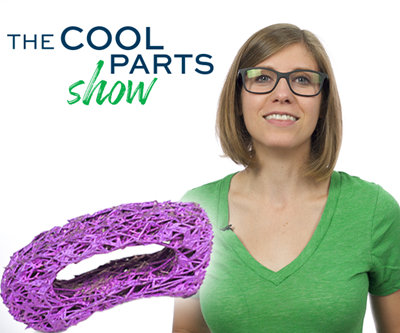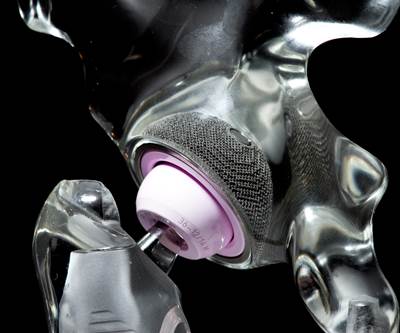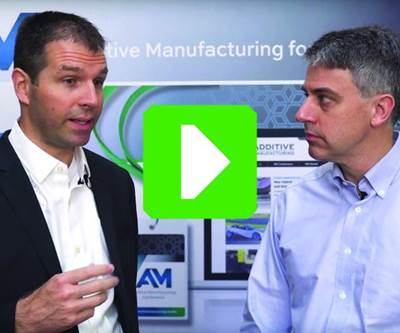How PrinterPrezz Aims to Realize a Manufacturing Model Tailored to Medical Devices
3D printing for orthopedic implants enables innovation and better patient outcomes, but a new type of manufacturer may be needed to realize this promise. A startup focused on implant development, approval and production via additive manufacturing includes surgeons among its founders.
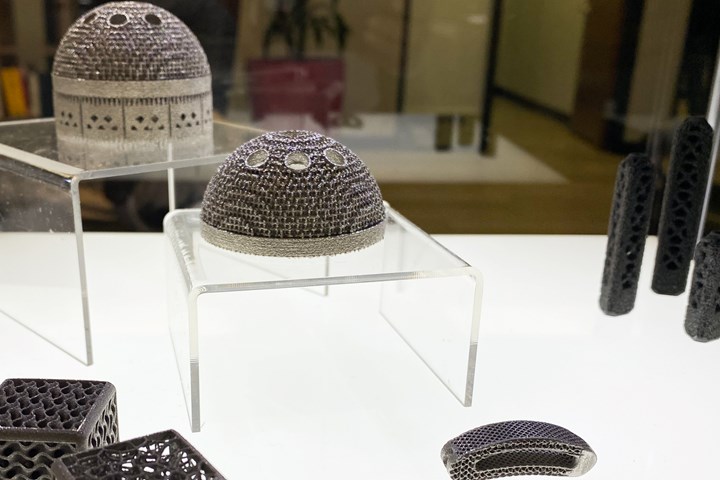
For class 2 medical devices, which include hip and spine implants, the FDA approval path is known and defined. PrinterPrezz expects to become progressively more experienced and efficient at completing this path, as described in the article below.
Editor’s note: PrinterPrezz is now part of Zeda, Inc.
If there is one category of manufactured product that has the most to gain from additive manufacturing (AM), that category might be orthopedic implants. 3D printed lattices are only the start of the reason — lattice geometries encourage bone ingrowth, and additive manufacturing makes it possible to design and produce better lattices. But more broadly than this, AM also allows for innovation in implants in a way no other manufacturing process can. The freedom to iterate designs rapidly and manufacture small quantities cost-effectively opens the way for the development of new implant designs tailored to ever more specific surgeries, patient types and surgeon preferences.
The result will be faster surgeries and faster patient recoveries. And the result of this will be hospitals better able to meet the growing demand for orthopedic surgeries through increased throughput. All this promise is available now; metal AM technology and its corresponding software tools are proven and ready to manufacture new implants in new ways. The remaining obstacle is not technological, but instead organizational, according to Shrinivas Shetty.
“You cannot use the traditional manufacturing model to go after medical devices with 3D printing,” he says.
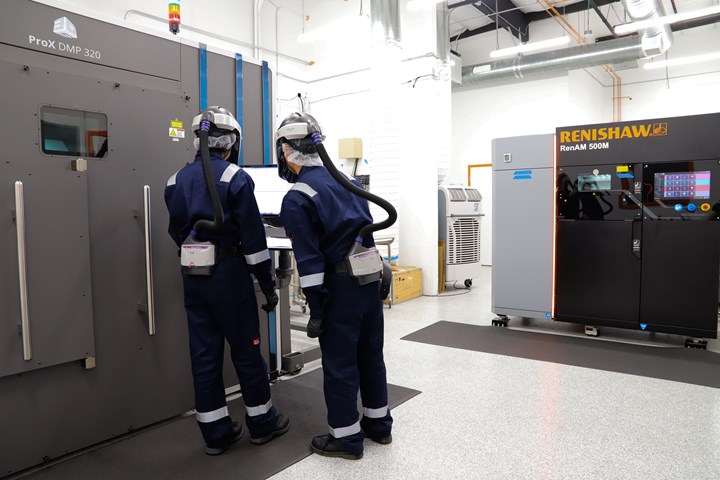
Production capabilities include six metal AM machines from four different vendors, two of them seen here. The diversity aims to ensure having the most effective platform available for any particular product.
Shetty is CEO and co-founder of PrinterPrezz, a startup launched with this challenge in mind. The company is interesting not only for the conduit it potentially brings to medical devices — that is, a single pipeline from surgeon inventor through development and regulatory approval and into manufacturing — but also because of the important point it illustrates about AM in general. Today, industrial supply chains and product development practices assume conventional manufacturing. They respect the limitations of conventional processes. Additive takes away previously accepted limitations, but taking advantage of the resulting freedom entails rethinking the way manufacturing proceeds, how the manufacturing provider is organized, and what role the provider plays. PrinterPrezz is among the very clearest examples of this I have found: a ground-up reimagining of the manufacturing organization for AM, and for medical device AM in particular.
Why does the medical sector demand this, its own additive manufacturing model? Because in medical, product ideas do not originate with marketers or engineers. They more commonly originate with surgeons. And in medical, products do not succeed solely because of their appeal to the end user, other surgeons. They succeed first by winning approval from the Food and Drug Administration (FDA), a vital requirement that the product development process ought to recognize from the outset.
PrinterPrezz aims to be a one-stop shop beginning with surgeons ... and proceeding through FDA approval into production via metal AM.
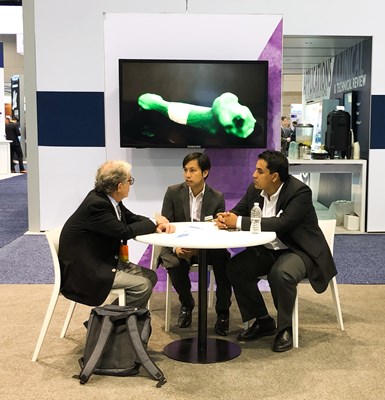
Founders include CEO Shrinivas Shetty (right) and CMO Alan Dang (center). Here they meet with spine surgeon Steve Garfin at a medical conference.
Shetty says PrinterPrezz aims to be a one-stop shop beginning with surgeons and the hospitals where they work and proceeding through FDA approval into production via metal AM. The company is new; it is developing four new implant products from its initial four customers now, and it expects that each of these products will be fully brought to market in less than one year apiece — a process that with many medical devices takes five years. In its small facility in Fremont, California, among the resources PrinterPrezz is already using are six metal AM machines from four different AM machine makers, a variety that is aimed at ensuring the company has just the right platform to best produce any given implant design. This product development capacity will also be the production capacity, and the company says just these six 3D printers will be enough to meet the manufacturing needs of about $100 million worth of annual orthopedic implant sales as customer products begin to enter full production.
Surgeons and Semiconductors
Shetty comes from the semiconductor industry, where he spent decades, so the objective PrinterPrezz was founded to pursue is familiar to him. Semiconductor is another sector in which the development of a new contract manufacturing model was necessary for the market and the technology to realize their promise. Other PrinterPrezz founders include Kishore Karkera, formerly in a production leadership role with Apple, and two orthopedic surgeons, brothers Alan and Alexis Dang. The latter two are familiar with the challenges of bringing a new idea to market in the orthopedic space.
Dr. Alan Dang, inventor of a spinal implant with a lattice geometry he says better corresponds to the observed mechanism of bone growth, says good ideas for new medical devices are both born in hospitals and languish there. The reason: An engineer can’t take the surgeon’s idea and proceed, nor can an AM service bureau, because too much specialized expertise is needed. This leaves the surgeon inventor with a difficult choice.
“He could take a pay cut and develop the product, he could never see his family and try to do the work in his spare time, or he could bring the idea to one of the big medical device companies and probably lose control of it,” Dang says. For his own idea, he did not want any of those options. PrinterPrezz is now developing the idea not for commercialization, but as a benchmark of its development pipeline.
The company brings various components to the solution to the problem of making medical device ideas real. Its team includes surgical expertise in the same proportion as engineering and AM expertise, allowing the inventor to relax his or her direct role in product development. That is, PrinterPrezz contains the bridge between surgical and engineering knowledge so the inventor does not have to bridge this distance personally.
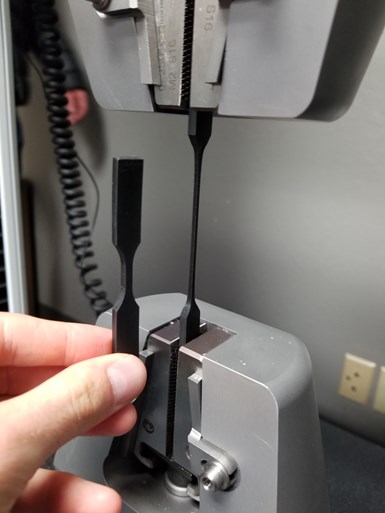
In-house testing equipment helps confirm products will pass FDA evaluations before being submitted to the FDA for this testing.
In addition, the company has expertise in attaining FDA approval. Its sole focus for now is class 2 medical devices — including knee, hip, spine and dental implants — because the approval path for these items, while strict, is known and defined. Understanding what the FDA will expect informs product development from the beginning. “If I know the FDA is going to demand the device withstand 5 million loading cycles, then let’s design it for this requirement and confirm it meets this requirement before ever submitting it,” Dang says. Test equipment matches what FDA regulators use in their own evaluations, and over time, this aspect of PrinterPrezz’s service — its successful anticipation of the FDA’s demands — will only get better. The challenges of winning approval for one customer’s invention will inevitably impart lessons that aid later customers.
Finally — fundamentally — PrinterPrezz has production capability, the heart of why the company exists and the role it expects to play. Product development is performed on the same additive platform that will be used in full production, whatever that platform might be. The company’s six metal AM machines come from 3D Systems, EOS, GE Arcam and Renishaw. The diversity allows the company to be unbiased toward any platform, seeking the machine that best realizes the geometry a given device needs. Similarly, it uses design software from Ansys, Materialise and nTopology for much the same reason — to have the software in-house that best realizes the geometry needed. For an unaided surgeon or hospital to find the means to test this array of different software and hardware combinations in parallel so rapidly would be impractical at best.
“We want to be one purchase order for all of development and production.”
The company also has capabilities in-house for related considerations such as powder metallurgy and heat treating, with coating to be added soon. “We want to be one purchase order for all of development and production,” Shetty says.
Indeed, combining development and production into one organization encourages rapid progress from one to the other, he notes. “We have no incentive for product development to continue any longer than it has to,” he says. PrinterPrezz’s interests are the same as the inventor’s: Get the product successfully into production; get the product to market.
Manufacturing with a Small Footprint

A significant amount of implant production can occur inside this small building. PrinterPrezz says it already has enough additive production capacity to serve the needs of about 16 different implant products.
And once all four initial customers are in full production, PrinterPrezz will be at about one-quarter capacity. This fact points to one other striking detail about AM and the new type of manufacturing provider it suggests — namely, the compactness of the footprint of production. PrinterPrezz’s six additive machines and the related resources around them fill a few small rooms within a light industrial space in a commercial office park. Yet the company estimates this capacity would be enough to fulfill not just the full production needs of the first four customers, but the full production needs of 16 orthopedic implant products of roughly the same manufacturing quantities.
Of course, capacity will have increased before it could ever be committed to this extent. PrinterPrezz will keep on scaling up, its founders note, so that it always has AM capacity for developing the next medical device while it meets the production needs of the implants it has brought to market already.
Related Content
Large-Format “Cold” 3D Printing With Polypropylene and Polyethylene
Israeli startup Largix has developed a production solution that can 3D print PP and PE without melting them. Its first test? Custom tanks for chemical storage.
Read MoreCasting With Complexity: How Casting Plus 3D Printing Combine the Strengths of Both
Aristo Cast is advancing a mode of part production in which casting makes the part, but 3D printing enables the geometry.
Read MoreHow Norsk Titanium Is Scaling Up AM Production — and Employment — in New York State
New opportunities for part production via the company’s forging-like additive process are coming from the aerospace industry as well as a different sector, the semiconductor industry.
Read MoreAluminum Gets Its Own Additive Manufacturing Process
Alloy Enterprises’ selective diffusion bonding process is specifically designed for high throughput production of aluminum parts, enabling additive manufacturing to compete with casting.
Read MoreRead Next
Topology Optimized 3D Printed Spine Implant: The Cool Parts Show #2
Medical contract manufacturer Tangible Solutions shares a titanium 3D printed spine implant with an unusual lattice structure in this episode of The Cool Parts Show.
Read More3D Printed Hips Versus the World's Deadliest Mountain
3D printed trabecular titanium hip implants—printed by Lima Corporate on Arcam EBM machines—helped legendary Italian mountaineer Romano Benet to continue scaling the world's most dangerous peaks.
Read MoreVideo: Smith & Nephew on 3D Printing Patient-Specific Surgical Instruments
Using MRI and additive manufacturing to produce a cutting block customized to the patient aids the precision of the surgery.
Read More

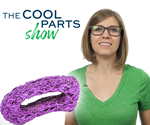

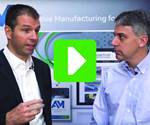






.png;maxWidth=300;quality=90)









